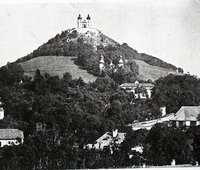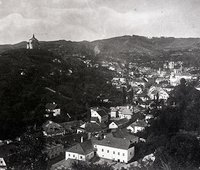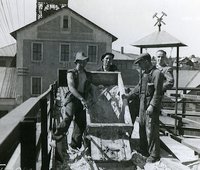Banská Štiavnica is a historical free royal mining town, which is closely connected with the mining of gold and silver, which was mined already in the time of the Celts. Banská Štiavnica was one of the most important mining centers in the world. The biggest boom in mining was in the 16th century, when over 300 000 kg of silver was mined in Banská Štiavnica ore region. In 1782, the population of Banská Štiavnica reached 24 000, which means that Štiavnica was the third largest town in Hungary after Pešť (Budapest) and Prešpork (Bratislava). In the 18th century, excellent constructors (Hell family) worked here, who built a unique water management system consisting of more than 40 artificial water reservoirs - tajch, which were used for pumping water from the mines. In 1763, the world's first technical college, the Mining Academy, was founded here by empress Mary Therese. Since 1993, the city and the surrounding technical monuments have been included in the UNESCO World Cultural and Natural Heritage List.




